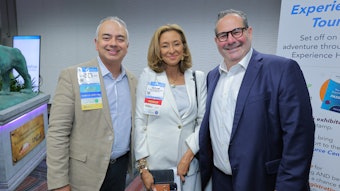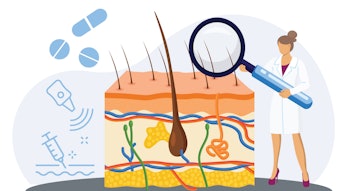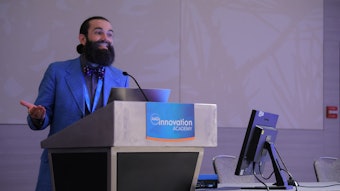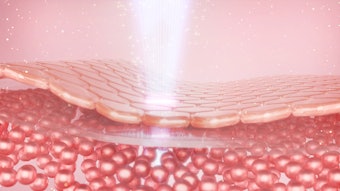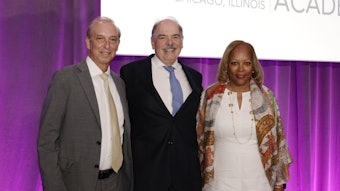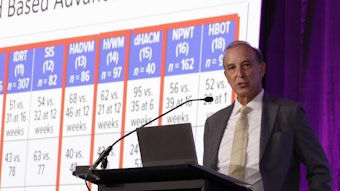Coming down the pipeline
Discover the fast track and speed bumps for navigating gaps, opportunities, and shifting treatment types in dermatology.
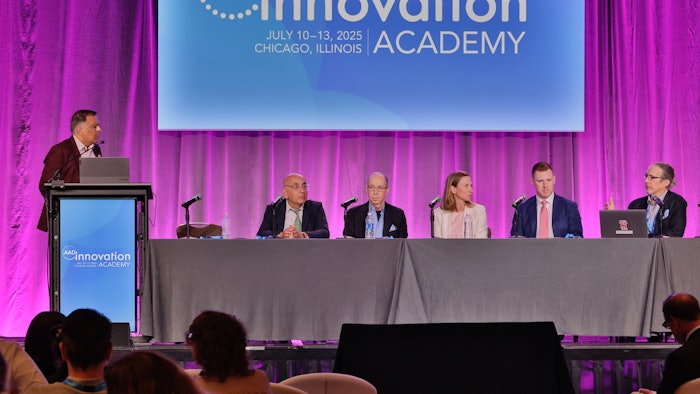
Let the innovation flow. That was the mantra for Friday’s session, P001 – Pipeline Therapies in Dermatology, a bold discussion on treatment potential in all modalities, including the latest research findings in early phase 1 and 2 trials.
The research pipeline in dermatology is both rich in potential and at risk of extinction of tradition, session director Neal Bhatia, MD, FAAD, told attendees. Dr. Bhatia, who is director of clinical dermatology at Therapeutics Clinical Research in San Diego, said although exciting treatments are emerging, it’s crucial to proceed with caution.
“There’s a bit of a poaching of medical dermatology. We’re giving medical dermatology away to allergists and rheumatologists,” Dr. Bhatia said. “The average dermatologist can look at the pipelines, see what’s coming, and take a step back from their treatment algorithms to ask themselves, ‘Am I really doing what’s up to date? Is there something that’s better that I should consider?’”
Stop and go
The answer to Dr. Bhatia’s question is yes, according to session presenter Todd Schlesinger, MD, FAAD, clinical assistant professor of dermatology at the George Washington School of Medicine and Health Sciences in Washington, D.C. Dr. Schlesinger’s presentation, “Pipeline of Devices and Aesthetics: What’s left?” showcased potential new therapeutic advances in the pipeline, including neuromodulators, which have different periods of effect and use, soft tissue fillers with novel ingredients designed to improve longevity and safety, and regenerative medicine such as new peptides, exosomes, and combination therapies.
“Dermatology is bristling with innovation. Better technology will lead to worldwide innovation and new products both in the aesthetic and therapeutic spaces,” Dr. Schlesinger said. “I think we will see the development of novel fillers with new materials that are safer and more effective as well as neuromodulators and noninvasive ways to treat skin cancer. Additionally, with the development of better small molecules and peptides, we will see better skin care products for at-home use.”
Dr. Schlesinger did address the potential for gaps in dermatology’s ability to deliver topicals with a high degree of safety and improved efficacy.
“Although there are some new energy-based devices and some innovation in the marketplace, there is also some stagnation while new technologies are being developed,” he said. “There is also a gap in the ability to use more targeted therapies, such as RNA and DNA therapeutics, for skin diseases and aesthetic indications.”
What’s old is new again
In his presentation, “Pipeline of Biologics in Dermatology: Shots in the Dark,” Jonathan S. Weiss, MD, FAAD, called the biologics pipeline robust and innovative but said it still needs to expand into other areas that are underserved. Dr. Weiss, the co-managing partner of Georgia Dermatology Partners, also addressed repurposing existing biologics for use in new conditions in addition to using new biologic molecules in dermatologic conditions that are not yet adequately controlled.
For example, Dr. Weiss noted the latest phase clinical trials taking place with biologics that block OX40 and OX40 ligand, key drivers of T-cell imbalance, and inflammation in inflammatory dermatoses. This pathway is currently being targeted for atopic dermatitis (rocatimlimab/AMG451, amlitelimab/SAR445229) and hidradenitis suppurativa (amlitelimab), with the potential to be studied in alopecia areata and scleroderma, he said.
Other novel pathways currently being explored include:
- Antibodies that block ligands that signal through CXCL1 and CXCL2 and chemokine receptors involved in neutrophil migration to sites of inflammation. Eltrekibart/LY3041658 blocks all seven ligands that signal through these receptors and has completed phase 2 studies in hidradenitis suppurativa (HS).
- Agonists of the CD200 receptor, which downregulates inflammation through its effects on myeloid cells, including lymphocytes. ARQ234 is in early phase testing for atopic dermatitis.
- Interleukin-1 receptor accessory protein (IL-1RaP) is a blockade that simultaneously abrogates multiple disease drivers among the IL-1 family of proinflammatory cytokine receptors, including IL-1R, IL-33R, and IL-36R. LAD191/ALM27134 has completed phase 1 testing and is moving into early phase 2 testing in HS. It has potential in multiple inflammatory conditions.
“To me, the biggest gap is in identifying more unmet needs. Many of the above biologics are being studied in conditions for which there are already some reasonably good treatments,” Dr. Weiss said. “Although we need improvement in these areas, certainly there are other unmet needs that can use some innovation. I am hopeful that the current trials noted above will give us far better control of immunologically mediated conditions, such as atopic dermatitis, hidradenitis suppurativa, alopecia areata, vitiligo, and scleroderma.”
Dedication to the mission
Without these new developments in the pipeline, Dr. Bhatia said, dermatologists will be “stuck,” which could lead to clinician apathy and poor patient care. Advancement takes the will of all dermatologists, he said, with a special push for medical school students and early-career dermatologists.
“I think it’s also a bad habit of dermatologists not taking the time to explain the rationale for new therapies to patients, which also leads to bad treatment adherence and dissatisfaction,” Dr. Bhatia said. “So, it really comes from all levels of experience.”
Ultimately, Dr. Bhatia said, the dermatology pipeline is primed for advancement. And it will take an all-hands-on-deck approach from the specialty to move it from development to clinical use.
“Research and development are not going anywhere. If we’re not supporting innovation, we’re going to remain in a cycle of continuously using bad generics,” he said. “We’re dedicated to dermatology, and that means we must be looking at the future and bringing home strategies for doing what’s best. That’s the reason we are here at Innovation Academy.”
In addition to Drs. Bhatia, Schlesinger, and Weiss, the full panel of speakers included Leon H. Kircik, MD, FAAD; Edward L. Lain, MD, FAAD; George Michael Lewitt, MD, FAAD; Andrea Tesvich Murina, MD, FAAD; and Raja Sivamani, MD, FAAD.
